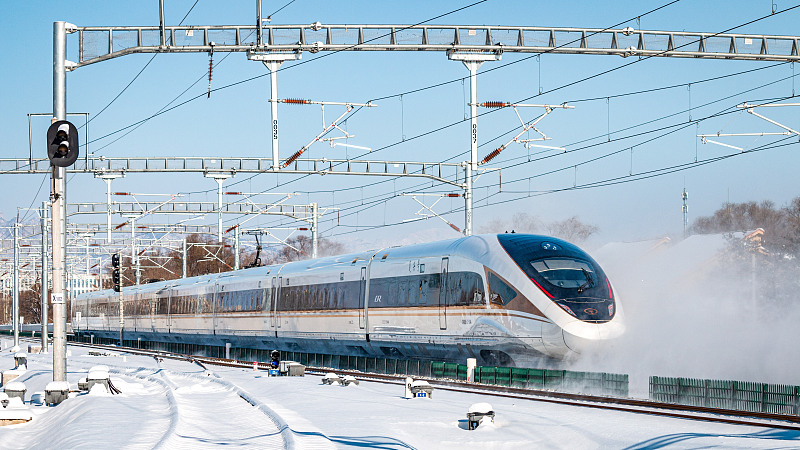BEIJING: In less than one minute, a production line of a photovoltaic (PV) manufacturing factory in north China’s Hebei Province produces a 1.92-square-meter piece of glass that can generate electricity.
The company’s headquarters and research center are based in Beijing. It took over five years for the company to overcome the tech difficulty of making cadmium telluride (CdTe)-based PV, a thin-film technology, able to produce electricity. Although just a few microns thick, the film can absorb most visible light. Together with other layers, it can form an electric field that converts light absorbed in the CdTe layer into current and voltage.
The glass has been put into large-scale production in Hebei, contributing to China’s green energy development and the coordinated development of the Beijing-Tianjin-Hebei (Jing-Jin-Ji) industrial cluster.
As China’s capital city, Beijing has abundant talent resources and innovative research institutes, while its neighboring Hebei Province has various manufacturing factories and adequate technical personnel. The glass production reflects the two places fully playing to their complementary advantages. So far, several cooperative projects like the CdTe-based PV manufacturing have been rooted in Hebei and Tianjin.
According to Liu Bozheng, executive deputy director of the Jing-Jin-Ji Joint Work Office for Coordinated Development, Beijing transferred over 74.87 billion yuan (about $10.5 billion) worth of technology to Tianjin and Hebei in 2023, more than ten times the tech expenditure in 2013.
Over the 10 years, enterprises in Zhongguancun, a major technology hub in Beijing, known as China’s Silicon Valley, have set up more than 10,000 branches in Tianjin and Hebei, and other Beijing enterprises have invested 2.3 trillion yuan ( about $324 billion) in companies in Tianjin and Hebei. The region is accelerating coordination through the “R&D in Beijing, manufacturing in Tianjin-Hebei” model.
The Jing-Jin-Ji regional coordinated development is a national strategy put forward in February 2014 to achieve better integration and more balanced regional development.
The plan seeks to address regional income disparities and reduce pollution levels while promoting economic growth and innovation.
Ten years on, more than 3,000 manufacturing enterprises have been relocated from Beijing to Hebei and Tianjin, nearly 1,000 markets and logistics centers in the capital have been moved or upgraded, and over 9,200 hectares of land freed up after the demolition of illegal buildings in Beijing has been afforested, according to a Jing-Jin-Ji joint work office news briefing on Thursday.
The total economic output of China’s Jing-Jin-Ji industrial cluster in 2023 has surpassed 10.4 trillion yuan (about $1.5 trillion), a 68 percent increase over 2013 , the office said.
“Thanks to the coordinated development strategy, we have invested and built some industrial bases and inspection and testing service bases in Tianjin, including mobile equipment, public works engineering, communication signals, and energy conservation,” Li Wei, deputy director of the Railway Engineering Research Institute of the China Academy of Railway Sciences (CARS) Co. Ltd told CMG.
The company is a leading research institute on railway construction and transportation. A large number of China’s high-speed railway products are researched and developed by its Beijing research center and mass-produced in Tianjin and Hebei.
Cooperating more closely in technology and innovation will be the industrial cluster’s focus in the future, according to the Jing-Jin-Ji joint work office.
Three places released six trans-regional industrial chain maps for the first time in November last year, guiding further integration of regional industrial and supply chains.
The six supply chains, which represent the upper, middle and lower reaches and subdivisions of the six industrial chains, are new energy and smart vehicles, robots, hydrogen energy, bio-medicines, high-end mother machines, cyber security and industrial internet.
Dai Yongkang, the director of the Office of Tianjin Leading Group to promote Jing-Jin-Ji Coordinated Development, told CMG in a recent interview that they have sorted out over 400 “blocked points” of the six industrial chains among the three regions.
“We will further strengthen trans-regional coordination and accelerate the cultivation of advanced industrial clusters,” said Dai. –The Daily Mail-CGTN news exchange item




